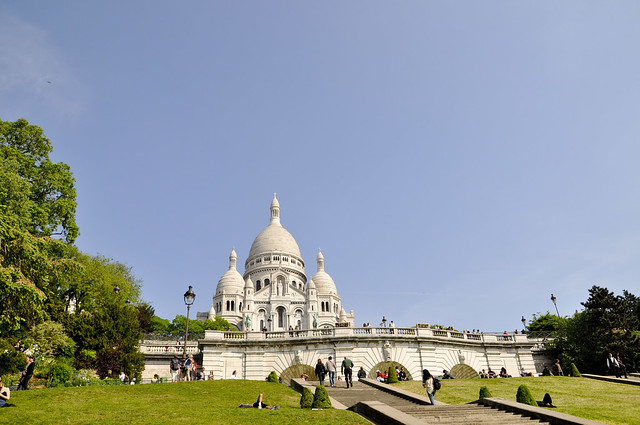
Guardámos para o fim a visita á Basílica do Sagrado Coração que está no topo de Montmartre e dedicámos uma manhã a fazê-lo. Há muito mais para fazer que simplesmente visitá-la, todo o seu entorno convida a ficar um pouco mais, queremos sentar-nos na relva a comer uma sandes enquanto vemos as pessoas a passar, ou ficar a apreciar os originais artistas de rua que por ali andam.
We've saved for last a visit to the Sacre Coeur that is at the top of Montmartre and we devoted a morning to do so. There is much more to do than just visit it, all it's surroundings invites you to stay a little longer, we wanted to sit down on the grass and eat a sandwich while watching people pass by, or appreciate the unique street performers that are there.
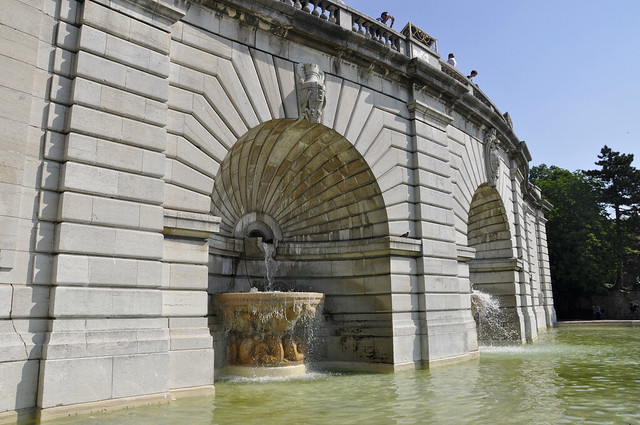
Reza a história que foi construída depois de uma promessa de Alexandre Legentil e Hubert Rohault de Fleury em troca da salvação de França na guerra franco-prussiana. Além disso atribuíam a decadência da cidade e do país, não aos factores políticos mas sim espirituais e a Basílica seria uma forma de os recuperar.
Em 1873, o Cardeal Guibert consegue autorização para construir em Montmartre e a obra termina em 1914. O arquitecto a seu cargo foi Paul Abadie, que misturou dois estilos: o romântico e o bizantino. Só depois do final da Primeira Guerra Mundial foi consagrada.
Hoje em dia é local de "romaria" turística e sem dúvida um dos que mais gostámos de visitar em Paris.
The story goes that it was built after a promise of Alexander Legentil Rohault and Hubert de Fleury in exchange for the salvation of France in the Franco-Prussian war. Also attributed to the decline of the city and the country, not for political factors but spiritual and the Basilica would be a way to recover them.
In 1873, Cardinal Guibert got permission to build in Montmartre and the work ended in 1914. The architect in charge was Paul Abadie, who mixed two styles: romantic and Byzantine. Only after the end of World War I it was consecrated.
Today it's local "pilgrimage" tourist and undoubtedly one of the most liked to visit in Paris.
In 1873, Cardinal Guibert got permission to build in Montmartre and the work ended in 1914. The architect in charge was Paul Abadie, who mixed two styles: romantic and Byzantine. Only after the end of World War I it was consecrated.
Today it's local "pilgrimage" tourist and undoubtedly one of the most liked to visit in Paris.

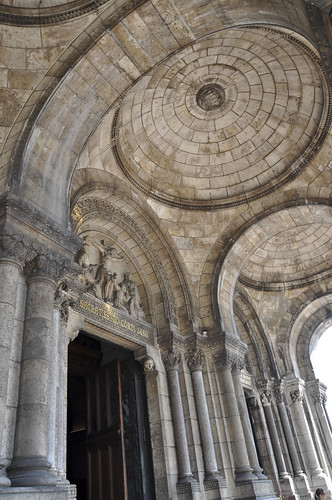
Na fachada estão duas figuras muito importantes da história do país ambas representadas com estátuas equestres, do lado direito está Joana D'Arc e do lado esquerdo, o Rei D. Luís IX. Foi um importante monarca francês pelo seu papel nas Cruzadas além de o seu reinado em França ser considerado um dos mais prósperos a todos os níveis, ficando conhecido como o século de ouro de S. Luís.
In the façade there are two very important figures in the history of the country both represented with equestrian statues on the right there's Joan of Arc and the left, King Louis IX. He was an important French monarch for his role in the Crusades besides his reign in France is considered one of the most prosperous at all levels, becoming known as the Golden Age of S. Louis.
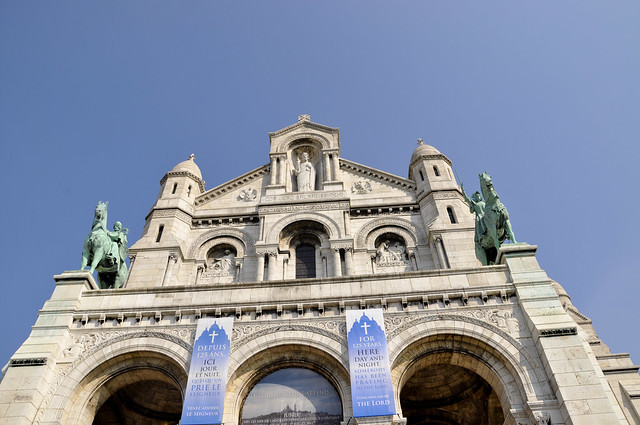
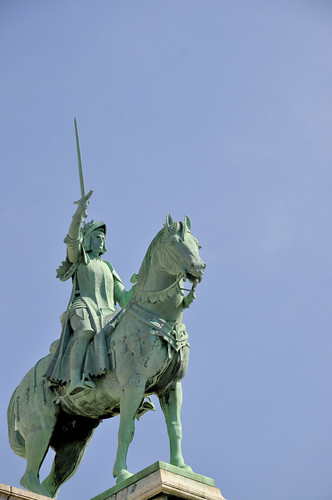

A entrada para a Basílica é gratuita (paga-se apenas para subir á cúpula e aproveitar a vista). Com um formato de uma cruz grega, tem quatro cúpulas pequenas e uma maior que é a central (com 83 metros de altura), são as suas janelas que permitem maior entrada de luz.
Na abside junto ao altar, podemos ver um dos maiores mosaicos do seu género: o Christ in Majesty. Representa o sagrado coração de Jesus a ser venerado por várias figuras, do lado esquerdo pode ver-se a Virgem Maria e representantes dos cinco continentes assim como um membro da igreja católica, do lado oposto o Arcanjo Miguel.
The entrance to the Basilica is free (you pay only to climb to the dome and enjoy the view). With a shape of a Greek cross, it has four small domes and a bigger one in the center (with 83 meters), it's windows to allow more light to enter.
In the apse at the altar, we see one of the largest mosaic of its kind: the Christ in Majesty. Represents the sacred heart of Jesus being worshiped by various figure,s on the left there's the Virgin Mary and representatives from five continents as well as a member of the Catholic church, opposite to them the Archangel Michael.
In the apse at the altar, we see one of the largest mosaic of its kind: the Christ in Majesty. Represents the sacred heart of Jesus being worshiped by various figure,s on the left there's the Virgin Mary and representatives from five continents as well as a member of the Catholic church, opposite to them the Archangel Michael.
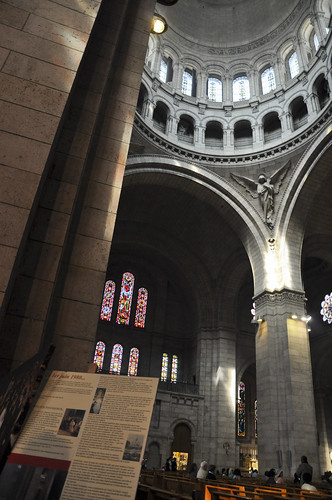

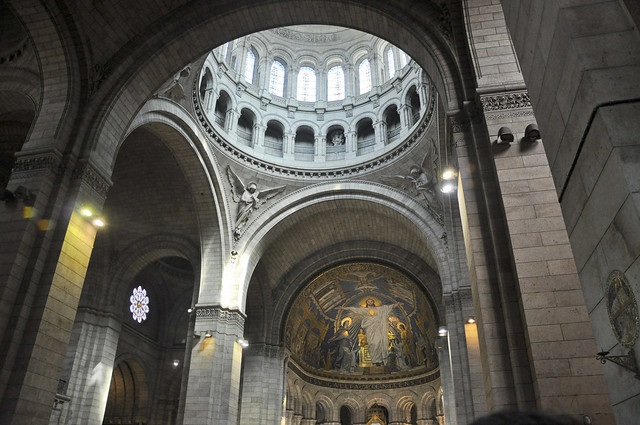
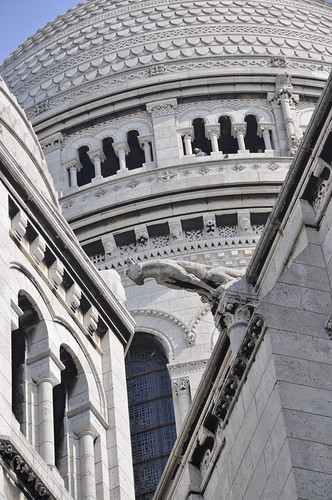
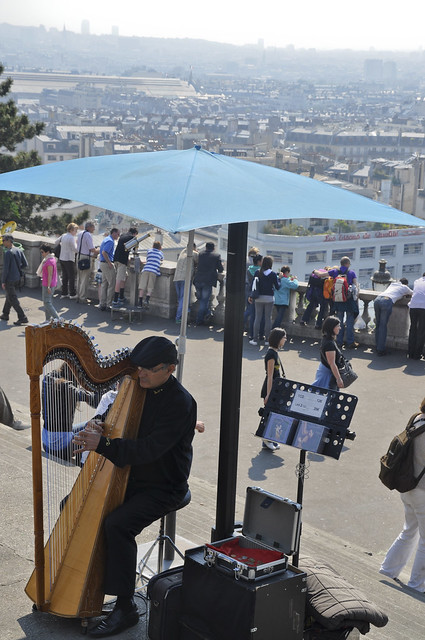
O seu exterior construído em mármore branco, tem vários detalhes do estilo romântico além disso não podiam faltar as famosas gárgulas.
Continuámos a visita subindo á cúpula, colocaremos essas fotografias noutro post.
Its exterior was built in white marble, it has several details of the romantic style furthermore it had to have the famous gargoyles.
We continued to visit the dome, we will post those pictures in another post.
We continued to visit the dome, we will post those pictures in another post.


Sem comentários:
Enviar um comentário